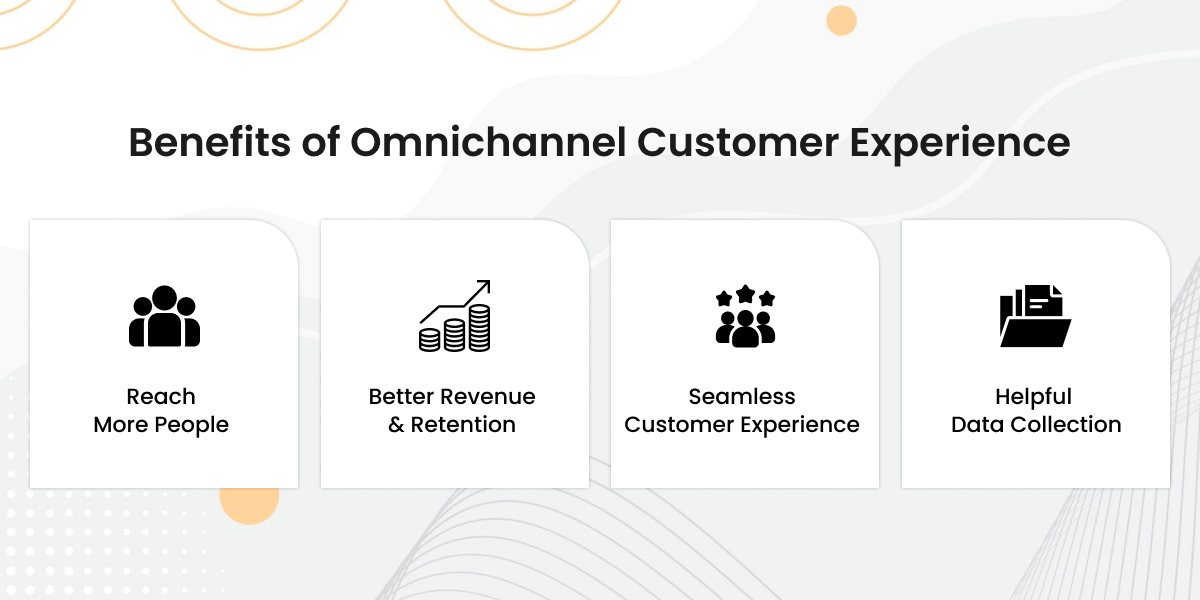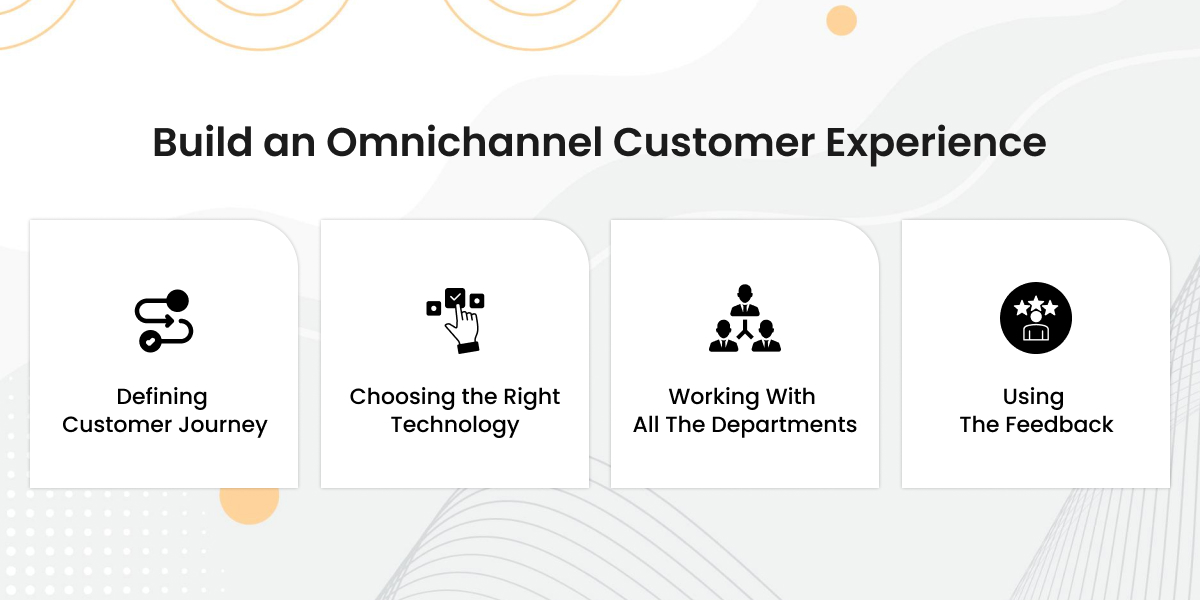Omnichannel Customer Experience: What Is It & Why Is It Important?
For modern businesses, omnichannel customer experience is becoming a necessity day by day. Customers have a number of platforms to interact with modern businesses, making it a must for every business to be present.
The channels to interact with consumers are endless, from search engines to social media and mobile applications to infinite scrolling sites. An omnichannel presence is essential to reach every potential customer and cater to them.
If you are also looking forward to adapting an omnichannel customer experience for your modern consumer, this is all you need to know about omnichannel customer experience.
Omnichannel Customer Experience: Definition
An omnichannel customer experience involves marketing, interacting, selling, and supporting prospective or existing customers through multiple channels. Any interaction with the customer can be carried out on another platform without breaking the communication and starting anew.
For example, if your social media advertisement has brought in a query from a prospective customer, and the same customer visits your website, the conversation is carried on from where it was left.
In short, omnichannel customer experience is where a customer’s experience with your brand is initiated on one channel and carried onto other channels seamlessly.
How is Omnichannel Customer Experience Different From Multichannel Customer Experience?
It’s easy to get confused between multichannel customer experience and omnichannel customer experience.
In this digital age, most businesses already work with multiple channels to interact with their customers. However, it does not automatically make it an omnichannel customer experience.
Omnichannel is all about the integration of your channels and platforms, where every interaction with a customer is part of a whole process. The channels are integrated tightly with each other.
On the other hand, a multichannel business may have multiple channels, but they work in silos independently. For example, the marketing strategy of their brick-and-mortar store will be different from how they manage their social media account.
Hope this will make it clear what an omnichannel customer experience is. But why is it so important for the businesses of today? Here is why.
Benefits of Omnichannel Customer Experience
The omnichannel approach presents you with the possibility of connecting to your potential customers no matter which platform they are on.
Therefore, when they find you, the brand’s introduction would be relevant to them. It also gives your business an edge in terms of customer engagement. Here is why omnichannel customer experience is important.

Reach More People
If a certain set of customers likes a certain way of marketing or interaction from their brand, omnichannel presence can help you. As the number of platforms you are on increases, the chances of attracting more customers also go up.
Better Revenue & Retention
According to this Harvard Business Review survey, 73% of 46000 online shoppers used multiple channels for their shopping journey. This is a clear indicator of the increased prevalence of omnichannel customer experience and the business it brings.
Moreover, an Omnisend report noted an 18.96% engagement rate in their campaigns on three or more channels, compared to single-channel campaigns with an engagement rate of 5.4% (250% more engagement with the omnichannel approach).
Seamless Customer Experience
The omnichannel customer experience also offers a frictionless choice for customers. Here, they can interact with your brand on the platform they are comfortable with through the channel that is convenient to them. It helps in keeping the relevance of the brand as well.
Helpful Data Collection
For the business, omnichannel customer experience is a gold mine of data. The consumer behavior and interaction will provide you with an understanding of how your customers have reached your brand, their pain points, and the improvements you can make to perform better.
Steps To Build an Omnichannel Customer Experience
Now that you know how important an omnichannel customer experience is for your business, it’s time to get to the drawing board and start creating one. Here is the process.

Defining Customer Journey
The first step is to map out your customer’s whole journey, from knowing about your brand or coming across it to leaving it be or making a purchase.
Understand where your buyers are coming from, the beginning, the touch points they are interacting with, and what makes them leave or buy in the end.
This will help you identify issues with your user experience, and you will be able to tweak your omnichannel customer experience for the better.
Choosing the Right Technology
Live chats, mobile applications, calls, and other methods are the ways you can communicate with your customer.
With omnichannel customer experience, you will need to bring all the customer data together. Choose a technology where no matter what the channel customer accesses, you will have all the information available for that customer, including the previous interactions.
This will help you pick up from right where you left them. It will also make the experience more personalized since you will already be aware of their interests.
Working With All The Departments
Since, in its essence, omnichannel customer experience means a single thread of communication regardless of the platform, customers should have that no matter what department they are talking to.
Be it sales, marketing, product team, or customer support, all departments should have a similar voice and should be capable enough to offer a cohesive customer experience from any point in the customer journey.
If you are just beginning with omnichannel customer experience, this may feel overwhelming. However, try starting small with only the departments that deal with customers directly and expand the strategy moving forward.
Using The Feedback
Feedback from the customers will let you know what they want from your business. It will eventually translate to an effective customer journey and a better customer experience.
The feedback can be collected from the customers by sending out surveys or having pop-ups once they have used your product or services. It will let you know how they are interested in interacting with your brand.
Create an omnichannel approach based on the reviews and opinions you receive from the customers. So, use these surveys and even social media comments to improve your strategies.
This is how you get started, step by step, with the omnichannel customer experience. But if you already have it implemented, are there any ways to improve or optimize it for the better? Let’s find out.
Tips To Improve Your Omnichannel Customer Experience
- Be aware of customer behavior and changes in it.
- Learn from the success stories of market leaders, and implement their steps. If it ain’t broke, don’t fix it.
- You don’t need to be on every platform, but create a positive customer experience wherever you are. Be where your customers are.
- Make your websites and channels mobile-friendly. Not only will it enhance customer experience, but it will also help your SEO efforts.
- Your content should be consistent. Keyword placing and high search ranking will only take you so far if your content is unclear and to the point. Cater to your customers, not the search engines.
- Improve response times on your queries. In 2022, a large number of customers expect a response time of fewer than 60 minutes. Engage and address the queries as soon as they arrive.
- Take help from experts, researchers, developers, and freelancers to make your omnichannel customer experience as smooth as possible. It can’t be a one-man show.
- Text messages, radio, magazines, and sponsorships are all great channels to have a voice and interact with your customers, too. Don’t forget offline channels.
- If you have a brick-and-mortar store, ensure your online and offline experiences complement each other. Many consumers will check your business online and then decide to come to your store. When they do that, make that transition easy for them.
- Like every business effort, consistency is the key here. You can build a loyal customer base with continuous effort and improvements only. Try to have a single voice that resonates with your consumers, from your emails to advertisements and social media posts to in-store experiences.
Conclusion
Omnichannel customer experience is a process of having a single chain of interaction with consumers through different channels. It helps you build a loyal customer base with increased revenue and retention. Starting small, you can implement your omnichannel customer experience strategy by understanding customer needs, choosing the right channels, and improving it with feedback.

 +91 9638710389
+91 9638710389 








